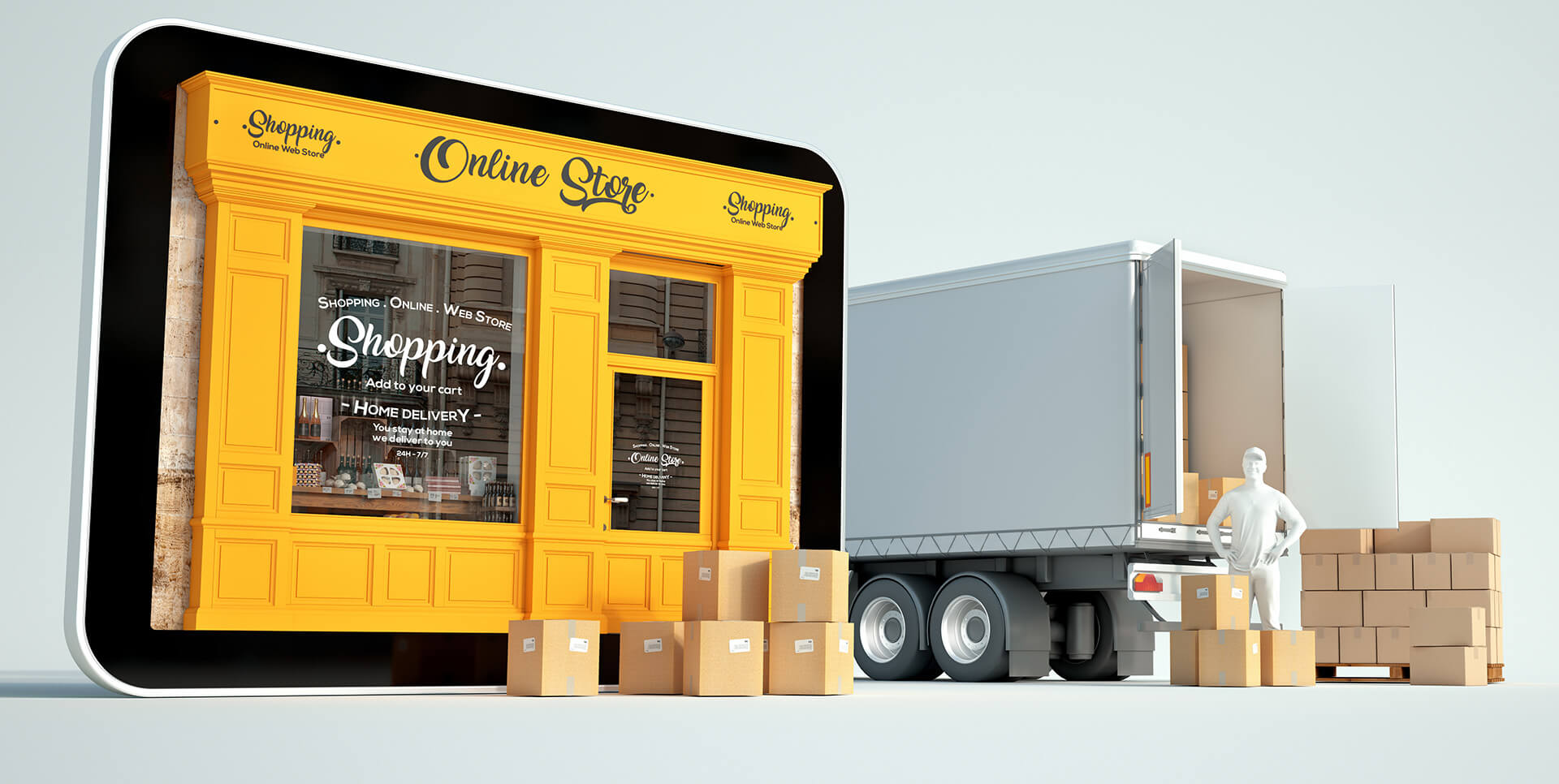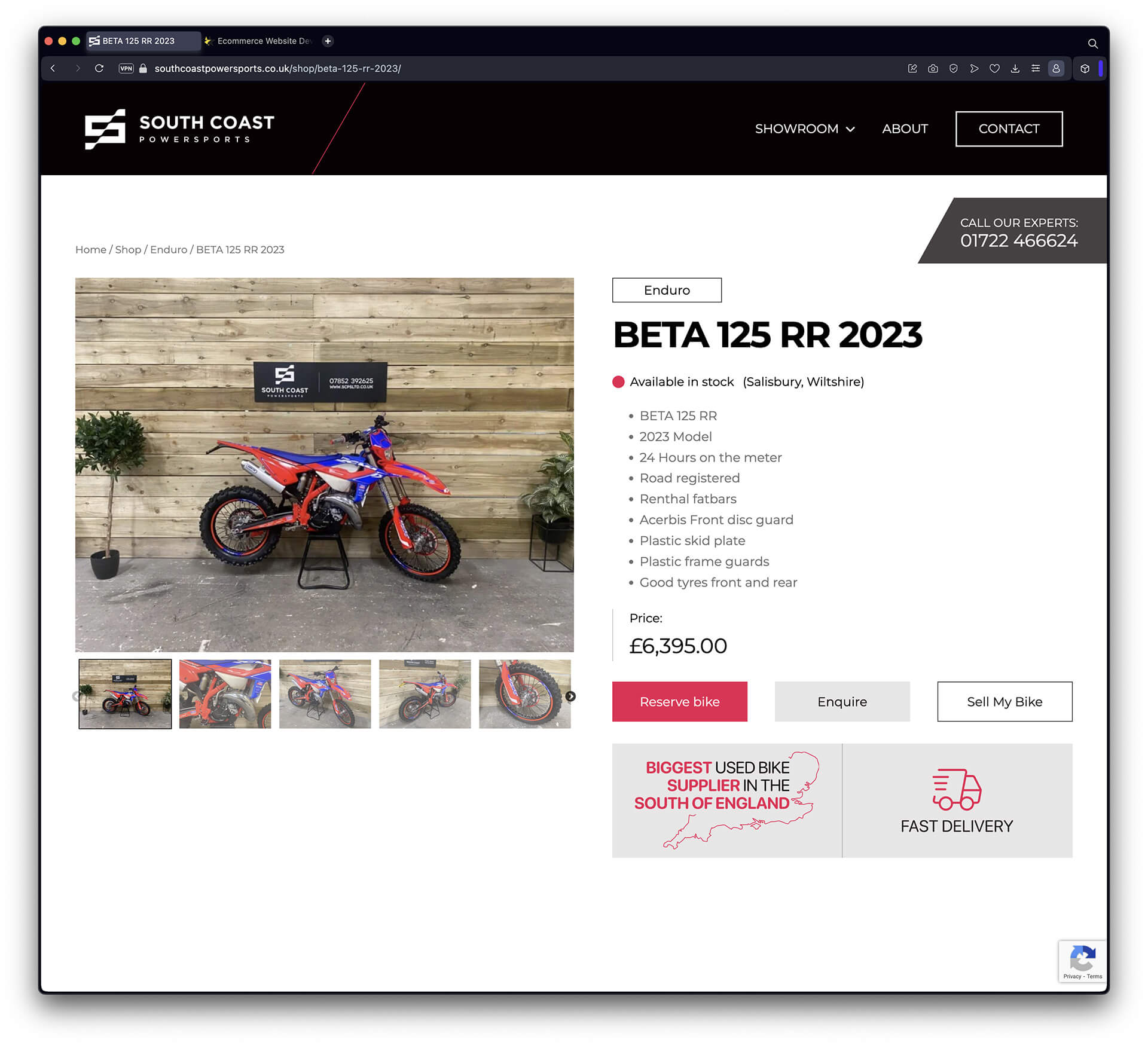In today’s digital age, leveraging the power of the internet is essential for small businesses to thrive. Many small business owners wonder, “Can I use my small business website as an online store?” The answer is a resounding yes! With the right strategies and tools, your website can become a lucrative online store, expanding your reach and boosting your sales.
Let’s find out how…

Your website is not just a static online presence; it’s a dynamic tool that can propel your business to new heights. In this section, we’ll explore the vast potential your website holds for becoming a thriving online store. We’ll delve into how your website can evolve from a simple platform that showcases your business into a powerful e-commerce hub that drives sales and revenue.
Your website is more than just an online brochure; it’s a powerful tool that can drive sales and revenue for your business.
By leveraging features like online ordering, secure payment processing, and interactive content, your website becomes a key driver of sales and revenue.
It enables you to reach a wider audience, engage with customers on a deeper level, and ultimately, grow your business in ways that a traditional brochure simply can’t match.
Turning your website into an online store offers numerous advantages that can significantly boost your business’s success. Firstly, it opens up new revenue streams by allowing customers to browse and purchase your products or services at any time, from anywhere in the world. This 24/7 accessibility means you can make sales even when your physical store is closed, increasing overall revenue.
Moreover, an online store has the potential to reach a much broader customer base than a traditional brick-and-mortar shop. With the internet breaking down geographical barriers, your products can be discovered by people across the globe, vastly expanding your market reach. This increased exposure not only attracts new customers but also enhances brand awareness and credibility.
Furthermore, operating an online store typically involves lower overhead costs compared to maintaining a physical storefront. You can save on expenses like rent, utilities, and staffing, allowing you to allocate more resources towards marketing efforts or product development. Additionally, digital marketing tools offer cost-effective ways to promote your online store and target specific customer demographics, further maximizing your return on investment. Overall, transitioning your website into an online store presents an opportunity for significant growth, increased profitability, and enhanced customer engagement.

Small Business Online Store De Havilland Gin by LWDA
Many small business owners hesitate to embrace e-commerce due to various apprehensions, but these concerns can be addressed with the right strategies. One common fear is the perceived complexity of setting up and managing an online store. However, with user-friendly e-commerce platforms like Shopify or WooCommerce, creating a professional-looking website has become more accessible than ever. Additionally, comprehensive tutorials and customer support services are available to guide users through the process.
Another concern is the potential for increased competition in the online space. While it’s true that the digital marketplace is competitive, small businesses can stand out by offering unique products, exceptional customer service, and personalized shopping experiences. Building a strong brand identity and leveraging social media platforms to engage with customers can also help differentiate your business from competitors.
Security concerns surrounding online transactions are another common worry. To address this, small business owners can implement secure payment gateways, and SSL encryption, and adhere to industry-standard security practices. Providing clear privacy policies and secure checkout processes instils confidence in customers and alleviates their security concerns.
Lastly, some businesses may worry about the logistics of shipping and handling online orders. However, partnering with reliable shipping carriers and implementing efficient inventory management systems can streamline the fulfilment process. By addressing these apprehensions head-on and implementing practical solutions, small business owners can successfully transition to e-commerce and reap the benefits it offers.
Transforming your website into a successful online store requires strategic optimisation. In this section, we’ll delve into the essential steps for optimizing your website to maximize sales and enhance the shopping experience for your customers. From choosing the right e-commerce platform to designing a user-friendly interface, we’ll explore how to tailor your website for seamless online transactions. Let’s unlock the full potential of your website as an e-commerce powerhouse.
Choosing the right e-commerce platform is crucial for the success of your online store as it forms the foundation of your entire operation. Each platform offers different features, pricing, and customisation options, so selecting the one that aligns with your business needs is essential.
Popular e-commerce platforms include:
Selecting the right e-commerce platform ensures a smooth and efficient online shopping experience for your customers while providing you with the necessary tools to manage and grow your online store effectively.
The post you are reading was published using the Small Business Website Template, which was built for WordPress. As mentioned above, WooCommerce integrates seamlessly with WordPress, so if you like this theme, feel free to talk to us about adding WooCommerce to help build your e-commerce store.

Artisan Motor Co. E-commerce website built by Devstars
Optimising your website’s design and user experience is crucial for driving sales and maximising conversions. A well-designed and user-friendly website creates a positive impression on visitors, making it easier for them to navigate your site, find products, and complete purchases.
By ensuring a clean and intuitive layout, you can guide customers through the shopping process seamlessly, reducing friction and cart abandonment rates. Mobile responsiveness is also essential, as many shoppers browse and purchase from their smartphones.
Clear and compelling product images and descriptions enhance the shopping experience, providing customers with the information they need to make informed purchase decisions. Additionally, easy access to customer support, transparent shipping and return policies, and secure checkout processes instil trust and confidence in your brand.
Overall, optimising your website’s design and user experience not only improves convenience for shoppers but also increases the likelihood of conversions, ultimately driving revenue for your business.
Integrating payment gateways such as PayPal, Stripe, or Square is essential for facilitating secure and convenient online transactions. These gateways allow customers to make purchases on your website using various payment methods, such as credit/debit cards, digital wallets, and bank transfers.
By offering multiple payment options, you cater to diverse customer preferences, increasing the likelihood of completing a sale. Additionally, integrating reputable payment gateways instils trust and confidence in your customers, as they know their sensitive financial information is protected.
Moreover, seamless integration of payment gateways ensures a smooth checkout process, reducing the risk of cart abandonment. It also enables quick and hassle-free transactions, enhancing the overall shopping experience for your customers.
Overall, integrating payment gateways not only expands your customer base by accommodating different payment methods but also boosts trust and streamlines the purchasing process, ultimately driving sales and revenue for your online store.
Your products are the heart of your online store, and presenting them in the best possible light is essential for attracting customers and driving sales. Additionally, maintaining accurate inventory levels ensures that you can fulfill orders promptly and avoid stockouts. Let’s delve into how to add products to your online store and implement inventory management systems to streamline your operations and enhance the shopping experience for your customers.
Creating compelling product listings with high-quality images, detailed descriptions, and competitive pricing is crucial for attracting customers and driving sales.
First impressions matter, and visually appealing images capture the attention of potential buyers, enticing them to explore further. Detailed descriptions provide essential information about the product, including features, specifications, and benefits, helping customers make informed purchasing decisions.
Moreover, competitive pricing ensures that your products remain attractive compared to competitors, encouraging customers to choose your store over others.
Well-crafted listings not only increase the likelihood of conversions but also contribute to customer satisfaction and loyalty. When customers have a clear understanding of what they’re purchasing, they’re more likely to be satisfied with their purchase, leading to positive reviews and repeat business.

SCP Motorcycle Dealer online Store by Devstars
Keeping track of your inventory levels and streamlining operations with inventory management software is crucial for running a successful online store. Accurate inventory management ensures you have the right products in stock when customers place orders, preventing stockouts or overselling.
By automating inventory tracking, you can save time, reduce errors, and optimise stocking levels.
This helps you avoid costly inefficiencies and ensures a smooth fulfilment process, ultimately leading to satisfied customers and improved profitability.
Inventory management software also provides valuable insights into sales trends and inventory performance, enabling data-driven decisions to optimize your product offerings and maximize sales.
Enticing customers with special offers, discounts, and promotions is vital for boosting sales and fostering customer loyalty. These incentives not only attract new customers but also encourage repeat purchases and brand advocacy.
By offering discounts or promotions, you create a sense of urgency, prompting customers to make purchases sooner rather than later. Moreover, it rewards loyal customers, making them feel valued and appreciated.
This strategy not only increases immediate sales but also strengthens long-term relationships with customers, leading to higher customer retention and ultimately, increased profitability.
In this section, we’ll explore the crucial steps involved in ensuring the safety and security of online transactions on your website. From implementing robust encryption protocols to adhering to industry-standard security practices, we’ll delve into how to safeguard your customers’ data and provide a secure shopping experience.
Let’s explore the essential measures you can take to protect against fraud, prevent data breaches, and instil trust in your online store.
Protecting your customers’ sensitive information through SSL encryption and PCI compliance is crucial for establishing trust and ensuring the security of online transactions.
SSL encryption encrypts data transferred between a customer’s browser and your website, preventing unauthorized access to sensitive information such as credit card details. This not only protects your customers but also helps build credibility and trust in your brand.
Adhering to PCI compliance standards further strengthens security by ensuring that your website meets industry standards for handling payment card data securely. Compliance involves implementing measures like secure payment gateways, regular security updates, and network monitoring to prevent data breaches and fraud.
By prioritizing the security of customer information, you demonstrate your commitment to their privacy and protection, fostering trust and confidence in your online store. This, in turn, leads to increased customer loyalty, higher conversion rates, and a positive reputation for your business.
Establishing credibility and trust with your customers is essential for the success of your online store. Secure transactions, transparent policies, and excellent customer service are key components in building this trust.
When customers feel confident that their sensitive information is protected during transactions, they are more likely to make purchases without hesitation. This is why implementing secure payment gateways and SSL encryption is crucial.
Transparent policies, such as clear terms of service, return, and privacy policies, build trust by showing customers that you value honesty and fairness in your business practices.
Additionally, providing excellent customer service demonstrates your commitment to customer satisfaction. Prompt responses to inquiries, easy returns, and helpful support create a positive shopping experience, encouraging customers to return and recommend your store to others.
By prioritising security, transparency, and customer service, you can foster trust and credibility, leading to long-term relationships with your customers and increased sales.
In this section, we’ll explore effective strategies for promoting your business and driving traffic to your website. Marketing plays a vital role in the success of any online store, helping to increase visibility, attract potential customers, and generate sales.
Let’s discover how to create a comprehensive marketing plan that boosts your store’s visibility, engages your audience, and ultimately drives conversions and sales.
Creating a comprehensive marketing plan that includes SEO, social media marketing, email marketing, and content marketing is essential for the success of your online store.
SEO ensures that your website ranks well in search engine results, increasing visibility and attracting organic traffic.
Social media marketing allows you to engage with your audience, build brand awareness, and drive traffic to your website through platforms like Facebook, Instagram, and Twitter.
Email marketing is an effective way to nurture leads, promote products, and encourage repeat purchases.
Content marketing involves creating valuable and relevant content that educates, entertains, or inspires your audience, establishing your brand as an authority in your industry.
By integrating these strategies into your marketing plan, you can reach a wider audience, build relationships with customers, and drive conversions, ultimately growing your online store and increasing revenue.
Utilising various tactics such as search engine optimization (SEO), pay-per-click (PPC) advertising, and influencer marketing is crucial for attracting visitors to your online store and driving sales.
As mentioned above, SEO helps your website rank higher in search engine results, increasing visibility and organic traffic.
PPC advertising allows you to target specific keywords and demographics, ensuring your ads are seen by relevant audiences.
Influencer marketing leverages the authority and reach of influencers to promote your products to their engaged followers, generating interest and driving traffic to your store.
By combining these tactics, you can reach a diverse audience through different channels, maximizing your store’s visibility and attracting potential customers.
Each tactic brings its unique benefits, from long-term organic growth with SEO to immediate targeted traffic with PPC and the credibility boost of influencer endorsements.
Together, they form a comprehensive strategy to drive traffic, increase conversions, and grow your online store.
Building relationships with your customers is crucial for the success of your online store. Engaging content, personalised communication, and responsive customer support play key roles in nurturing these relationships.
Engaging content, such as blog posts, videos, or social media updates, keeps your audience interested and connected to your brand.
Personalised communication, through email marketing or targeted messaging, makes customers feel valued and understood, increasing loyalty and trust.
Responsive customer support demonstrates your commitment to customer satisfaction. Promptly addressing inquiries, concerns, or issues shows that you care about their experience.
By focusing on these aspects, you create a positive relationship with your customers, leading to repeat purchases, positive reviews, and word-of-mouth referrals. Ultimately, building strong relationships results in customer loyalty, increased retention, and sustained growth for your online store.
Transforming your small business website into an online store opens up endless opportunities for growth and success. By following the steps outlined above and leveraging the power of e-commerce, you can reach a wider audience, increase sales, and take your business to new heights.